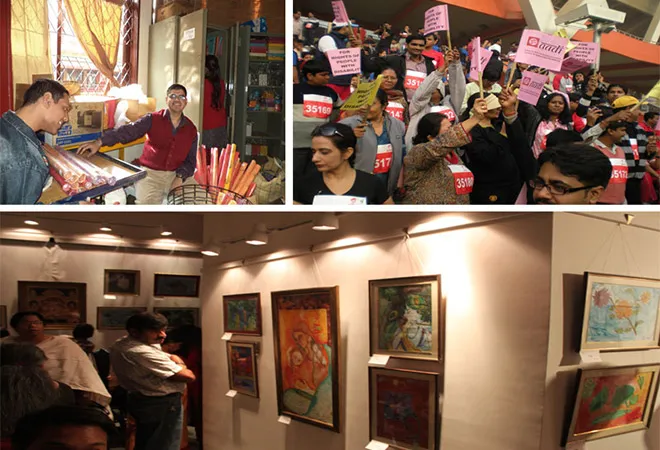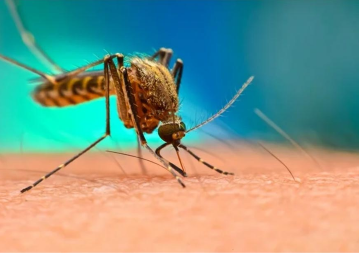Mental disorders have long been plagued with stigma due to lack of awareness and preconceived notions. This has prevented mental health from getting the same degree of attention as other health issues. Shockingly, the Millennium Development Goals almost entirely ignored any form of mental disorders, despite 10% of the global population being affected by some form of mental illness at any given time. According to the National Mental Health Survey (NMHS), the same figure for India was 10.6%, higher than the global average.
The economic burden associated with global mental disorders between 2011-2030 was estimated to be around $16.3 million. Therefore, mental disorders affect not just individual health but the overall health of a community and country. This has finally been recognised by world leaders who dedicated target 3.4 and 3.5 of the Sustainable Development Goals to the promotion of mental health and prevention and treatment of substance abuse.
Read Also | < style="color: #960f0f">#Elections2017: New worries creep into seemingly healthy Goa
Bearing 15% of the disease burden of global mental, neurological and substance use disorders, India is the second largest global contributor to mental disorders. Therefore, India plays a key role in bringing down the global rate. In order to address these challenges, India began framing the National Mental Health Policy (NMHP) in 2011. This was adopted in 2014 and each state was expected to either adapt the NMHP or create their state specific-policy. Among the 12 states covered by the NMHS, Uttar Pradesh, Manipur and Punjab will hold elections in the coming month. This is an ideal time to focus on the condition of mental health in these states and urge the newly-elected governments to prioritise it in their health agendas. However, they have not yet formulated any state-specific action plan, but are reportedly following the NMHP.
Read Also | < style="color: #960f0f">#Elections2017: More wasted children, anaemic men, women than before in Punjab
The lifetime prevalence of mental morbidity, which includes schizophrenia and other psychotic disorders, mood disorders, neurotic and stress related disorders and substance use disorders (excluding tobacco use disorder), was 13.7% at an all-India level. According to the NMHS report, Manipur has the highest risk of mental morbidity in the country, closely followed by Punjab. UP has one of the lowest estimates of mental morbidity prevalence. Mental morbidity is 2-3 times higher in urban metros than in rural and non-urban centres due to a fast-paced lifestyle, stress, breakdown of support systems and so on. Given that urban centres are continuing to expand, this is expected to rise. In terms of gender, depression and anxiety seem to be 2-3 times higher in women than in men, whereas men have higher rates of substance abuse, addictions and psychopathic personality disorder than women. Prevalence of mental morbidity also peaked between the ages 30-49 years (productive population of society).
 Source: NMHS report Get the data
Source: NMHS report Get the data
 Source: NMHS report Get the data
Source: NMHS report Get the data
Read Also | < style="color: #960f0f">#Elections2017 : UP spends least on health, reflects in its ill-health
Despite having the highest mental morbidity in the country, Manipur does not yet have a hospital for the mentally ill. Surprisingly, the state houses the maximum number of trained medical officers (9.73 per 100,000 population) for treating people with mental illnesses at the primary health centre (PHC) level. Most other states, Punjab (1.37 per 100,000 population) and UP (0.11 per 100,000 population) included, have exceptionally low rates of such trained doctors. The number of psychiatrists is also very low in most states, except Kerala. High-income countries have a psychiatrist to patient ratio of 1-2 psychiatrists per 100,000 population, while in India the ratio is 0.3 psychiatrists per 100,000. For Manipur and Punjab, this number stands at 0.5 and for UP, a mere 0.15 per 100,000 population. The availability of medicines for treatment of mental and neurological disorders is varied across the 12 states. The table below shows the availability of drugs for mental and neurological disorders in Manipur, UP and Punjab at the PHC, sub-district and district hospital level.
Availability of drugs to treat mental and neurological disorders in Manipur, UP and Punjab
| < style="color: #808080">STATE |
< style="color: #808080">PRIMARY HEALTH CENTRE |
< style="color: #808080">TALUKA/SUB DISTRICT HOSPITAL |
< style="color: #808080">DISTRICT HOSPITAL |
| Manipur |
Sometimes |
Sometimes |
Sometimes |
| Punjab |
Never/Not available |
Interrupted supply |
Sometimes |
| Uttar Pradesh |
Interrupted supply |
Interrupted supply |
Many times |
Source: NMHS Report (Mental Health Systems) Get the data
According to the National Crime Records Bureau, suicide incidence for UP, Punjab and Manipur is relatively low (1.7, 2 and 3.3 per 100,000 population, respectively). However, the survey ranked Kerala, West Bengal, Manipur, Rajasthan and UP as the top five states with high risk of suicide (including ideation, preparation, attempts and repeated thoughts of suicide). UP and Manipur have very high rates of people at risk of suicide but very low actual number of suicides. This gap indicates a possibility of either reporting issues or suggests that people with suicidal tendencies did not act upon their thoughts, or other contextual factors. While men in the three states had an almost double suicide incidence rate, women were reportedly twice as likely to commit suicide than men. More than a fifth of India’s population is afflicted by some sort of substance use disorder, with tobacco-use disorders being the most prevalent. Among the 12 states covered by NMHS, alcohol-use disorder is reportedly 8% in the agrarian state of Punjab, making it second only to Madhya Pradesh. Prevalence of ‘other’ substance disorders in Punjab stands at 2.5% – over four times the average for the NMHS states. Punjab accounted for 25% of the total illicit opium and 43% of the illicit heroin seized in India. Up 1% and 40% of the population consumes opioids, cannabis, sedatives and inhalants. In UP, 5-65% of the population use ganja/bhang, while other common drugs include other forms of cannabis, opioids, heroin, etc. Cannabis, heroin, ganja and painkillers are the most commonly used drugs in Manipur. In general, drug abuse is more common among the youth and adults, while in Punjab, sedatives and prescription drugs are consumed largely by the elderly.
Read Also | < style="color: #960f0f">Down to the district: The health of 5 states going to polls
According to the findings, almost nine in ten people with mental health disorders do not receive evidence-based treatment. The table below shows the worrying treatment gap in Manipur, UP and Punjab. This is largest in Manipur for severe mental disorders such as schizophrenia, bipolar affective disorders and severe depression. This gap could partly be due to low spending on mental health disorders in the country, accounting for a mere 0.06% of the health budget. Other factors such as stigma and low awareness act as stumbling blocks for people seeking treatment.
Treatment gap for mental disorders in Manipur, Uttar Pradesh and Punjab
| < style="color: #808080">STATE |
< style="color: #808080">MENTAL HEALTH DISORDER |
< style="color: #808080">TREATMENT GAP (%) |
| Manipur |
Common mental disorders |
87.4 |
| Manipur |
Severe mental disorders |
93.80 |
| Punjab |
Common mental disorders |
79.7 |
| Punjab |
Severe mental disorders |
57.1 |
| Uttar Pradesh |
Common mental disorders |
86.7 |
| Uttar Pradesh |
Severe mental disorders |
75 |
Source: NMHS Report (Mental Health Systems) Get the data
Since a majority of patients access treatment from a highly unregulated private sector, enough data is not available on mental healthcare. Therefore, public-private partnerships as well as streamlined, state-specific mental health action plans are urgently required. Both inter-sectoral and intra-sectoral (law, civil society, education, employment etc.) collaboration are essential to promote long-term mental health awareness, treatment and rehabilitation. The Mental Health Care Bill passed in the Rajya Sabha in August 2016 is a step towards the protection of the rights of people with mental illnesses. This Bill intends to replace the Mental Health Act, 1987 and reform archaic laws such as criminalising suicide and the use of electro-convulsive therapy.
Given this urgent scenario, it still remains to be seen how far the newly-elected governments prioritise the issue of mental health in their respective states.
This commentary originally appeared in The Wire.
The views expressed above belong to the author(s). ORF research and analyses now available on Telegram! Click here to access our curated content — blogs, longforms and interviews.




 Source: NMHS report
Source: NMHS report  Source: NMHS report
Source: NMHS report  PREV
PREV


